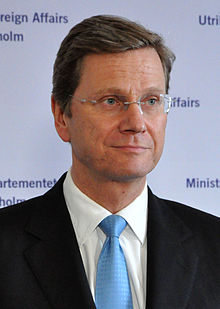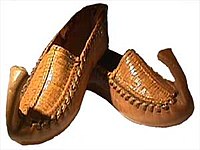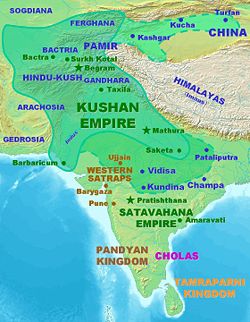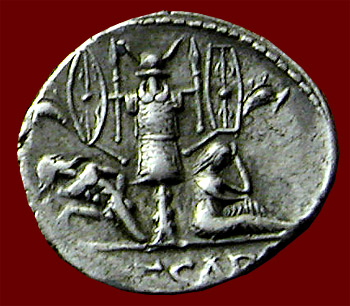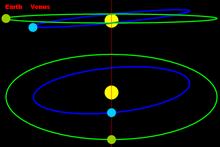truthSeeker
Primećen član
- Poruka
- 862
grb engleske plemićke porodice Goddard

ima moto "Cervus non Servus" (jelen a ne sluga)
ovaj grb takođe ima rogove na šlemu...doduše jelenske a ne u obliku polumeseca...
ipak polumesec je na štitu u istoj formaciji i bojama kao kod plemićke porodice Vojnović
hm, odakle je Goddard porodica?
http://en.wikipedia.org/wiki/History_of_SwindonThe Goddard family was established within Swindon prior to the 15th Century, Thomas Goddard of Upham acquired the Manor in 1563 and his descendant family were Lords of the Manor up until the 20th century. The estate included the area known today as the Lawns, and was bounded by the High Street and the site of Christchurch.
...
Swindon is a town in Wiltshire in the South West of England. People have lived in the town since the Bronze Age and the town's location, being approximately halfway between Bristol and London, made it an ideal location for the Locomotive Factories of the Great Western Railway in the 19th century.
Swindon has grown from a population of just 1,198 in 1801 to over 150,000 in 2001.[1]
...
A Roman town called Durocornovium existed to the east of Swindon from the 1st to 4th centuries, located in present day Wanborough.[3] It is probable that Swindon began life as a settlement linked to a military encampment in the early days of the Roman occupation.
...
http://en.wikipedia.org/wiki/DurocornoviumDurocornovium was a Roman town in Britain, situated on the Roman road between Corinium Dobunnorum (Cirencester) and Calleva Atrebatum (Silchester). In many ways Durocornovium was a typical small Roman town.
...
The names of Roman towns in England often derive from those of local natives. Duro is a Celtic word meaning fortified place. Some researchers attach a more specific meaning, calling it a Lowland Fortified Place. Since this would make the Durotriges (a tribe of Britons in Dorset) Kings of the Lowland Forts, this is at odds with geography of the region, so the more generic title is appropriate.[citation needed]
Cornovium is more difficult to assess. Strictly speaking it should refer to a tribe called the Cornovii in the north-west based around Wroxeter, or an identically-named tribe from Cornwall, both distant from Wiltshire. Unless the inhabitants were migrants or outcasts, this idea is irreconcilable. There is, however, a mention of a Cohors I Cornovium in Roman records and suggestions have been made that they were connected with the site, though no evidence exists.
There are two better alternatives. One is that Cornovium refers to Cernunnus which is a Celtic name for a Stag God. There was a nearby stone circle at Broome Manor dating from Neolithic times. The other alternative is that the name is a corrupted form of Corio, who was a king of the Dobunni tribe at Cirencester, so the name would mean Fort On The Road To Corinium.
As yet there is no definitive answer.
Cornovii su možda Serijani u velikoj Britaniji


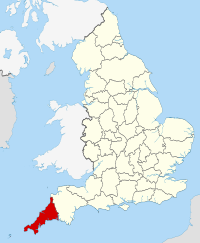
gledajući mape...
rog u 2 od 3 slučaja ima veze sa lokacijom...
rog na jugu Britanije je Cornwall, rog na severu su Cornovii
The Cornovii is the name by which two, or three, tribes were known in Roman Britain.[1] One tribe was in the area centred on present-day Shropshire, one was in Caithness in northernmost Scotland, and there was probably one in Cornwall.
...
The etymology of the tribal name is uncertain. Although it is accepted that *corn literally means "horn", there is disagreement over whether or not this refers to the shape of the land.[2] Considering that Cornwall is at the end of a long tapering peninsula, many scholars have adopted this derivation for the Cornish Cornovii: Victor Watts in the Cambridge Dictionary of English Place-names (2010), for instance, derives it from a postulated original tribal name *Cornowii, "the people of the horn".[4]
Malcolm Todd, in The South West to AD 1000 (1987), discusses the alternative etymologies that have been put forward. These include the name being a reference to dwellers in promontory forts, and an explanation hypothesised by Ann Ross in 1967 that the tribal names may be totemic cult-names referring to a "horned god" cult followed by the tribes, which Todd says may be cognate with the Gaulish Cernunnos or the unnamed horned god of the Brigantes.[3]
Cernunnos - rogati bog
otud moto na grbu "cervus non servus" (rogati a ne sluga)
http://en.wikipedia.org/wiki/CernunnosCernunnos is the conventional name given in Celtic studies to depictions of the "horned god" of Celtic polytheism. The name itself is only attested once, on the 1st-century Pillar of the Boatmen, but depictions of a horned or antlered figure, often seated cross-legged and often associated with animals and holding or wearing torcs, are known from other instances.
Nothing is known about the god from literary sources, and details about his name, his cult or his significance in Celtic religion are unknown. Speculative interpretations identify him as a god of nature or fertility.[1]
nego u pogledu Serijana zanimljivija je boginja Sirona čija svetilišta nalazimo u liniji koja prolazi posred Galije
http://en.wikipedia.org/wiki/SironaIn Celtic polytheism, Sirona was a goddess worshipped predominantly in East Central Gaul and along the Danubian limes. A healing deity, she was associated with healing springs; her attributes were snakes and eggs.... She was particularly worshipped by the Treveri in the Moselle Valley.
...
The name of the goddess was written in various ways: Sirona, Đirona, Thirona,[1] indicating some difficulty in capturing the initial sound in the Latin alphabet. The symbol Đ is used here to represent the Tau Gallicum, an additional letter used in Gaulish representing the cluster ts which was interchangeable with st- in word-initial position[2][3] and it is not a form of the letter "D". The root is a long vowel Gaulish variant of proto-Celtic *ster- (*h2ster) meaning ‘star’.[4] The same root is found in Old Irish as ser, Welsh seren, Middle Cornish sterenn and Breton steren(n).[5]

to je linija u kojoj nalazimo sledeća plemena Galije:
Treveri, Leuci, Lingones ,Sequsiavi, Carnutes, Turones, Curiosolites
a tačka južnije odgovaraju plemenima Garumna i Ausci

Ausci bi moglo da bude istog porekla kao Ossi /Asi a Garumna kao Germani...
Turones je verovatno direktno vezano za ime boginje Sirone (Thirones)...
Leuci su "Beli"
http://en.wikipedia.org/wiki/CarnutesThe Carnutes, a powerful Gaulish people in the heart of independent Gaul, dwelt in an extensive territory between the Sequana (Seine) and the Liger (Loire) rivers
...
The iconography of their numismatics includes the motifs of heads with traditional Celtic torcs; a wolf with a star; a galloping horse; and the triskelion. Many coins show an eagle with the lunar crescent, with a serpent, or with a wheel with six or four spokes, or a pentagrammatic star, or beneath a hand holding a branch with berries, holly perhaps. The wheel with four spokes forms a cross within a circle, an almost universal image since Neolithic times. Sometimes the circle is a ring of granules. Among the Celts, the ring and spokes may represent the cycle of the year divided in its four seasons, rather than the sun, which is a common meaning among cultures.[1] See Cross.
u vezi sa ovim zanimljivo je poreklo imena Karantanci za Slovence...
naime ruska primarna hronika kaže da su pre širenja rimskog carstva među podunavskim Slovenima bili i Srbi, Hrvati i Karantanci...
Karantanci se imenom lako mogu locirati među Panoncima...
http://en.wikipedia.org/wiki/CornacatesCornacates were a Celtic[1] tribe that migrated to Pannonia in Illyria.
http://en.wikipedia.org/wiki/SegobrigesThe Segusiavi ("Victorious ones") were a Celtic tribe of Gaul, whose fortress was located at Lugdunum (modern Lyons).[1]
The name "Segusiavi" may have been an alternative name of the "Segobriges" who were legendarily involved with Greeks in pre-Roman Gaul and the foundation myth of Massalia.[2]
natpisi posvećeni boginji Sironi nalaze se u Bordou, Saarland oblasti u Nemačkoj...,
http://en.wikipedia.org/wiki/SaarlandThe Saarland (German: das Saarland – German pronunciation: [das ˈzaːɐlant], French: Sarre) is one of Germany's sixteen federal states (Bundesländer). With its capital at Saarbrücken
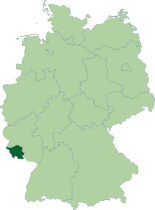
meni sve to liči na narode trgovce koji se šire u linijiama duž velikih prostranstava, a ne radijalno oko jednog centra...
Poslednja izmena:

















